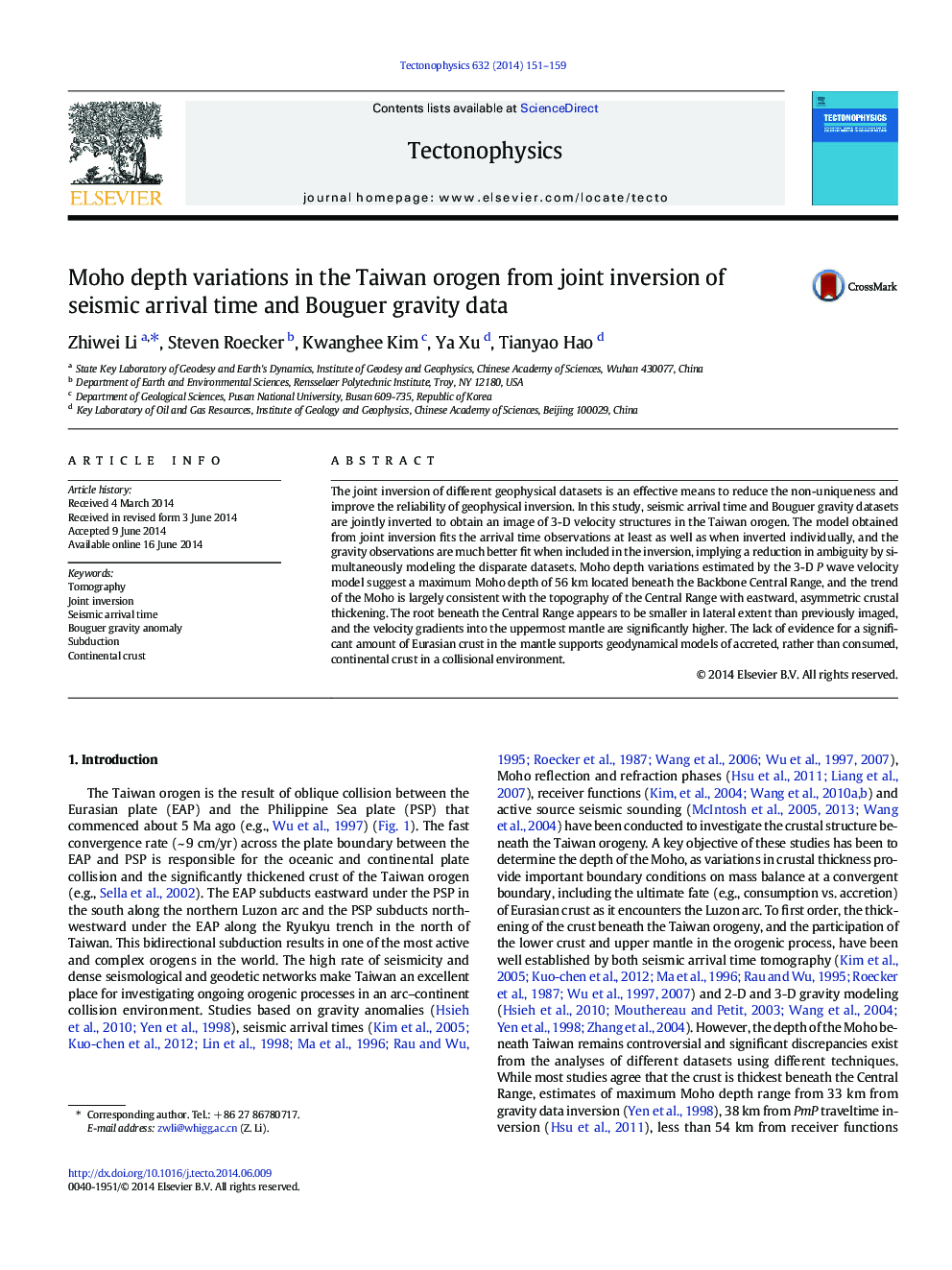| Article ID | Journal | Published Year | Pages | File Type |
|---|---|---|---|---|
| 4691856 | Tectonophysics | 2014 | 9 Pages |
•A more robust velocity and Moho model of Taiwan are obtained from joint inversion.•Narrower root and sharper gradients in upper mantle are found under Central Range.•Results support the recycled, rather than consumed, continental crust in Taiwan.
The joint inversion of different geophysical datasets is an effective means to reduce the non-uniqueness and improve the reliability of geophysical inversion. In this study, seismic arrival time and Bouguer gravity datasets are jointly inverted to obtain an image of 3-D velocity structures in the Taiwan orogen. The model obtained from joint inversion fits the arrival time observations at least as well as when inverted individually, and the gravity observations are much better fit when included in the inversion, implying a reduction in ambiguity by simultaneously modeling the disparate datasets. Moho depth variations estimated by the 3-D P wave velocity model suggest a maximum Moho depth of 56 km located beneath the Backbone Central Range, and the trend of the Moho is largely consistent with the topography of the Central Range with eastward, asymmetric crustal thickening. The root beneath the Central Range appears to be smaller in lateral extent than previously imaged, and the velocity gradients into the uppermost mantle are significantly higher. The lack of evidence for a significant amount of Eurasian crust in the mantle supports geodynamical models of accreted, rather than consumed, continental crust in a collisional environment.
Graphical abstractFigure optionsDownload full-size imageDownload as PowerPoint slide
